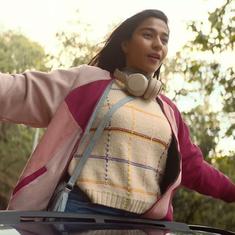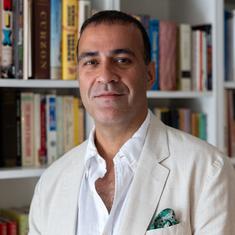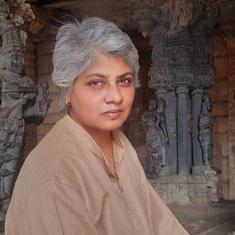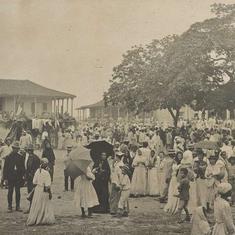When poet, environmental activist, and lawyer Will Falk served as “next friend” to the Colorado river, filing the first US lawsuit seeking to establish personhood for an ecosystem, he knew from the start he was fighting a lost cause. The case (Colorado River Ecosystem vs The State of Colorado) was swiftly dismissed by the federal court in April 2017. Later that same year, Will – a dear friend and my former student when he was an undergraduate at the University of Dayton, hence my use of his first name – sent me How Dams Fall, a searing, haunting tract chronicling his 4000-mile journey along the Colorado river, during which he lived hand-to-mouth out of his beat-up Jeep Grand Cherokee. After that journey with his first book, there could be no doubt in Will’s mind that a river is not only sentient but speaks to us, although most humans and their governments don’t care to listen.
The many gut-wrenching, heart-stirring, fire-breathing conversations I’ve had with Will over decades, conversations in which he became the teacher and I the student, conversations that felt like songs traversing in an instant the personal, literary, and political in strange and exquisite synergies, have impressed upon me the profound necessity of the global rights-of-nature movement. They have led me here, to the subject of my essay, Robert Macfarlane’s tripartite ecological-literary tour de force, Is a River Alive? (published by WW Norton). They have led me back to the question of a water body’s élan vital, its deep – dare we say sacred? – interlinkages with the rest of the natural world, explored in Macfarlane’s iridescent prose.
Multi-directionally prolific, Macfarlane is Professor of Literature and the Environmental Humanities, and Fellow of Emmanuel College, at the University of Cambridge. He has several award-winning books in the nature/travel/place writing genres to his credit – Mountains of the Mind (2003), The Wild Places (2007), The Old Ways (2012), Landmarks (2015), The Gifts of Reading (2016), The Lost Words (2017) and The Lost Spells (2020) with artist Jackie Morris, Underland (2019), and Ness, with artist Stanley Donwood (2019), to name most. His film writing credits include River (2022) and Mountain (2017), both narrated by Willem Dafoe. Macfarlane has also penned lyrics for songs and full-length albums, working with musicians such as Cosmo Sheldrake, Karine Polwart, and Johnny Flynn, and co-adapted (with Simon McBurney) in 2022 Susan Cooper’s The Dark is Rising for a BBC audio-drama series.
2025 is a bumper year for Macfarlane and his faithful readers. A full-length documentary feature film Underland – directed by Robert Petit, executive produced by Darren Aronofsky, with a screenplay adapted from the book by Macfarlane – was released in April and is beginning to make the festival rounds. Is a River Alive? arrived in hardback on May 1 in the UK and is already a number one Sunday Times bestseller, with book tours of the United Kingdom, Canada, and the United States to follow. Firefly, Macfarlane’s verse-image collaboration with artist Luke Adam Hawker, the first of a trilogy for children (though I’m sure this adult will acquire a copy), is slated for publication in October.
While Underland took Macfarlane ten years to complete, Is a River Alive? has come to be in half that time. Stealthily ramping up to epiphany at the end, it nonetheless feels unhurried – organically conceived, inventively researched, carefully chiselled – while striking an insistent, hypnotic chord, now ode, now lament, now cracked dirge. Three tales from the Anthropocene unfold: the first is set in Los Cedros (the forest of the cedars), a cloud forest in the high reaches of Ecuador and home to the Río Los Cedros; the second in Chennai, India, where the Adyar, Kosasthalaiyar, and Cooum rivers join the Indian Ocean; and the third in Nitassinan in eastern Canada, home of the Innu First Nations people, where the Mutehekau Shipu/Magpie river runs.
After an intimate prologue and a roving introduction that traces the origins of the rights-of-nature movement in copious, elegant detail, the story moves to Los Cedros, “a densely populated realm of seeing and signing forms.” In a landmark 2021 ruling, the Constitutional Court of Ecuador recognised the rights of the Los Cedros ecosystem, banning extractivist enterprise by state mining company Enami EP and its Canadian partner Cornerstone SA in the protected forest reserve. Seeking the source of the Río Los Cedros in the wake of this ruling are Chilean-Italian-British biologist and filmmaker Giuliana Furci, British multi-instrumentalist and singer Cosmo Sheldrake, Colombian lawyer-activist-scholar César Rodríguez-Garavito, and Macfarlane himself. Each has a distinct character, but the descriptions of mycologist Furci’s fierce advocacy for mushrooms and their ilk, her uncanny ability to spot “the fuzz in the matrix,” her suspicion of birders, and gentle sorrow at her father's passing make her personality leap off the page. The real protagonist of part one is undoubtedly the forest, “a living Wunderkammer … the home of fabulous beasts, birds, plants, and fungi” too numerous to list here.
“Rivers have it worst,” Macfarlane writes early on, describing the ecological fix we’re in. If Los Cedros was a damp, cool green with swirling-silver highlights, the Chennai Macfarlane unveils also seems two-toned, blood red and dull copper. It certainly is the case that the rivers in Chennai seem doomed, if not entirely dead, in part two. Gone are the glory days of the peninsular kings who built colossal, moving monuments to water, the days of the human-made eri system, a form of sustainable water storage which, unlike dams, feeds back into groundwater and aquifers.

When Macfarlane revisits in part two the historic 2017 Ganga–Yamuna Uttarakhand High Court judgment in India granting the two rivers rights of nature, a ruling in turn inspired by the 2017 Te Awa Tupua (Whanganui River Claims Settlement) Act in Aotearoa New Zealand, the court’s stance somehow rings hollow. In Chennai, where these landmark judgments are echoed in high court rulings covering the state of Tamil Nadu, legal protections do little for poisoned rivers, despite “a longing for something like transcendence” through the language of the law. All around us is detritus – sewage, pollutants, effluents, rotting garbage, belly-up death, the ravages of inhuman exploitation – coupled with the stench of abuse and greed.
This is not the tamilakam of yore, of aintinai, the classical sangam poet’s beloved interior landscape of neytal (coastal land), kurinci (hills), palai (desert), marutam (plain), and mullai (forest). Nor does this Chennai recall the glory days of the Kaveri/Ponni, of the Tamil country whose lakes, rivers, and eris gurgle, roar, and onomatopoeically slosh (jalajala, salasala) in Kalki Krishnamurti’s meandering historical romances. It is a city of “angels, ghosts, and monsters,” seesawing between flood and drought. But what redeems this account of the city, helping Macfarlane cull out a “geography of hope,” is the story and buoyant personality of activist-writer Yuvan Aves, author of the genre-bending Intertidal (2023). Here is when the two friends and collaborators meet in person for the first time. Incidentally, Aves also features in physicist and speculative fiction writer Vandana Singh’s 2024 Teaching Climate Change: Science, Stories, and Justice, recommended reading for college educators of our times.
Macfarlane experiences Chennai through Aves and his stories – a beleaguered Pallikaranai marsh; a tiny stretch of forest in the neighbourhood of Kotturpuram which Aves and his merry band of eco-warriors nurture; the toxic backwaters of Ennore Creek, bordered by mangrove forests and Olive Ridley sea turtle nesting grounds, defiled by factories and heavy industry. We hear of the abuse and violence marking Aves’s childhood, the death of immediate family members, his coming into himself as a guardian of snakes at Pathashaala, a J Krishnamurti school south of the city, and his eventual founding of Palluyir Trust for Nature Education and Research. We marvel at Aves’s remarkable ebullience, intellect, sensitivity, and tenacity through it all. A trip to Vedanthangal eri and bird sanctuary – the river Palar gets a quick mention here – with Aves’s curious and lively students from Abacus Montessori School offers joy, vibrancy, respite from some of the horror despite the incursions of a Sun Pharma factory into the exclusion zone.
Irreconcilable opposites, things welcome and unwelcome all at once, jostle for space in Chennai. Macfarlane tries to wrap his head and heart around these heterogeneous realities by violence yoked together amid a cascade of wasps, fruit bats, egrets, red ghost crabs, dying giant milkweed, the banyan (the strangler fig that spawns new life), and a revolving parade of gritty humans determined to prevent ecocide. And if the carcasses of protected Olive Ridley turtles wash up dead on the shore, there is also the miracle of new turtle hatchlings scuttling out to sea. Macfarlane can’t help but weep.
In stark contrast, part three of Is a River Alive? is “all silver-blues, grey-greens, mist-drifts and undersongs.” The spectre of multi-damming, the attempted ravaging of a wild river by power giant Hydro‑Québec, looms as five protagonists – Rob, Wayne, Raph (The Salmon), Danny (The Boss), and Ilya (The Bear) – undertake a brutal and splendid ten-or-so-day journey to the source of the Mutehekau Shipu, which, like Los Cedros, became a “living rights-bearing being” in 2021, the first ecosystem to do so in Canada. We are now on a magical mystery tour, as much or as little Yann Martel’s Life of Pi as Joseph Conrad’s Heart of Darkness, braving blackflies; wildfires; rapids of “terrible beauty” named Porcupine, Snow White, and Marmite; rainstorms; apocalyptic dreams; and a river “crescent faced, and roaring, like Hokusai’s wave.” Elements, and the elemental, demand a different kind of embodied cognition – the courage to “seek the current,” to hear the river’s voice, to receive and intuit the river’s message. The language of the river becomes the language of the poet, melding into one miraculous, paragraph-long sentence at Part Three’s close.
Allusions ripple through Is a River Alive?, across space and time. They span science, philosophy, literature, music, visual art, and the ecological frontlines. The book opens with a dedication to the late Josef DeCoux, doughty “guardian of the [Los Cedros] forest,” who appears in the first part, burly, bear-like, and fiercely alive. The first epigraph, recalling the book’s title, is an excerpt from Natalie Diaz’s breathtaking “The First Water is the Body” from her 2020 collection Postcolonial Love Poem. Then comes a steady cascade of names and works – arch-mage Ursula K Le Guin; the great Barry Lopez and Robin Wall Kimmerer (whose “grammar of animacy” forms a constant refrain); science fiction novelist Stanisław Lem, poet Friedrich Hölderlin, Byron and his “Darkness,” both unnamed, not to mention his legendary pet bear; the striking insights of Ivan Illich; the rapacious, racist geologist William John McGee; British military officer and geologist Robert Bruce Foote; the maps of cartographer Harold Fisk; historians Bhavani Raman and Venkatesh Ramakrishnan; Nakkeeran’s Neer Ezhuthu (2019), Krupa Ge’s powerful Rivers Remember: The Shocking Truth of a Manmade Flood (2019), without reading which no story of Chennai water must now be written; priest-“geologian” Thomas Berry; the prehistoric cave paintings of Lascaux and Chauvet in France; Algernon Blackwood; Martin Heidegger; Walter Benjamin; Nan Shepherd; geoscientist Arthur Newell Strahler; Homer; Virgil; Dante; Leonardo da Vinci; Kafka; Coleridge and his bounding cataract; moth wings “patterned like a William Morris print;” a Tolkienesque swamp hen with its “iridescent-purple neck glinting in the sun like mithril,” and so on. Looking for music? “The white noise of the cascade, with its repeating elements, is a Philip Glass composition.” There’s Johnny Flynn on the radio, punk-rocker-river-defender Feargal Sharkey, “someone somewhere playing Mull of Kintyre.”
The Epic of Gilgamesh pulsates through all three parts, with Macfarlane invoking specific moments that seem apt for his companions in Los Cedros, for Yuvan Aves in Chennai, and for Innu poet-activist Rita Mestokosho in Ekuanitshit, Quebec. His recounting of the “living river-forest” in Gilgamesh becoming “a poisoned wasteland” took me back to snake goddess Jaratkaru’s traumatised retelling of the destruction of the Khandava forest in Arun Kolatkar’s incendiary, Mahabharata-inspired Sarpa Satra (2004). I communed with WS Merwin’s ghost, too, as I read Is a River Alive?, somehow sensing his presence through its watery cycles of reticulation, circulation, and flow (sans punctuation, of course). And how could I, how could anyone, not hurtle down that rabbit hole of rabbit holes, the dappled, shape-shifting sonnets of Gerard Manley Hopkins, whose inheritor Macfarlane undoubtedly is?
Playfulness glints in Macfarlane’s prose. Lawyer-activist-scholar César Rodríguez-Garavito and forest guide Martín, snoring in their sleep, are “the toucan barbets of the high forest.” “Geomancer” and Christopher Walken look-alike Wayne is “Leibniz in a hoodie, Pliny in sneakers,” a line which most definitely belongs in a song. There’s also the deft poetry with which Macfarlane connects dots: the hummingbirds of Los Cedros, the bee eaters of Chennai, and the brook trout of Nitassinan are the “precious metals” of the waters. Verbs, ingeniously deployed, transfix.
“Shadow and flame tiger the leaves that edge the clearing.”
“Algae baizes the water.”
“A leaf-cutter bee snips an intricate doily out of a banana frond.”
“Terns scissor past us, all knife points and origami folds.”
“Water detonates, billows, bellows, shrapnels in all directions.”
But all the words in the world can’t make up for the loss of loved ones in Is a River Alive? – Giuliana’s father, Yuvan’s sister Yazhini, Wayne’s friend Paul, Innu elder William Napess. The grief of the bereaved runs through each of the book’s three parts.
Given the questions of privilege that inevitably accompany representing the marginalised, I have to ask – how do we read someone as gloriously gifted and impeccably learned as Macfarlane? How do we construe a writer-scholar-teacher from the former metropole tramping determinedly up and down the world in a bid to bring us stories of our ravaged planet?
You only have to read his writing to sense that Macfarlane is far from complicit. For starters, in Is a River Alive?, he locates himself firmly in his own corner of the earth in the prologue and epilogue, at The Springs near Cambridge, to which he returns in each part through the seasons and his travels. There we see him walking and talking with his son Will, and there we encounter all his three children at the end. Laying bare and historicising his subject position with candour, attention to detail, and simplicity is a master stroke (if you will), bolstering Macfarlane’s unimpeachable ethos. As he reminds us via Ursula Le Guin in a quotation to which the book keeps returning, “To subjectify is not necessarily to co-opt, colonise, exploit. Rather it may involve a great reach outward of the mind and imagination.”
So, rather than engage in tired polemics about human positionality or echo-chamber rants on what constitutes allyship, we could perhaps take our cue from Is a River Alive?. We could focus instead on possibilities for solidarity among us and with the natural world, the flows and counterflows of radical resistance, as the real-life protagonists of this book do.
There are legitimate precedents for such thinking. In the third part, Macfarlane recounts the story of a man approached by an orca pod in the water. The term “echolocation” – the practice in such species as bats and whales of emitting sounds that bounce back to the sender, helping identify objects (including prey) – surfaces here. I am reminded right away of Alexis Pauline Gumbs. In 2020’s Undrowned: Black Feminist Lessons from Marine Mammals, Gumbs reimagines echolocation as an inclusive practice of listening “across species, across extinction, across harm.” Defenders of the natural world, known and unknown, could (and do) similarly “echolocate” each other wherever they are, propelling through their work those of us who will listen to collectivise across disciplines, cultures, and borders. I think of Will (my friend, not Macfarlane’s son), fighting right now alongside the Paiute and other First Nations tribes in their resistance to the encroachment of the Lithium Mining Corporation on sacred land, Peehee Mu’huh (Rotten Moon)/Thacker Pass in Nevada.
Voices that are typically “other” (indigenous, black, feminist) thread through Macfarlane’s writing as much as those from the western canon; the former are quoted with intention, seriousness, and reverence, as teachers for our times. By affording such confluence, Is a River Alive? has the potential to participate in a larger upswell of resistance, resurrection, and revivification if read in conversation with an eclectic range of works, old and new – for example, Aves’s Intertidal (he’s working on a book on insects as we speak), Arati Kumar-Rao’s Marginlands (2023), Haunani-Kay Trask’s From a Native Daughter (1994), Allison Adelle Hedge Coke’s Blood Run (2006), Elizabeth Povinelli’s Between Gaia and Ground (2021), the writings of Bama, Toni Morrison, Mahasweta Devi, and Audre Lorde, to idiosyncratically name a few.
Perhaps hope is the thing with rivers. In a stunning postscript to the Los Cedros field trip chronicled in Is a River Alive?, “Song of the Cedars,” written in the misty cloud-river-forest heights, made its way into the world on October 29, 2024, with a historic legal petition by the More than Human Life (MOTH) Collective to the Ecuadorian copyright authorities making a case for the forest’s moral co-authorship. The case, Macfarlane tells us, is unlikely to make a dent, even in the progressive Ecuadorian courts, but is vital to establishing an intellectual property rights discourse that recognises the natural world’s profound role in human creative endeavour.
“Trees, speak in your leaves, please
And streams, tell me your dreams(Fluye río)
Birds, sing me your rhymes, please
And stones, teach me your times(Baja río)
(Clouds) Clouds, deepen my sight, please
(Corre río)
(Storms) Storms, lend me your light
(Fluye río)
(Earth) Earth, cover my limbs now
(Fluye río)
(Mould) Mould, thrive on my skin
(Baja río)”
I listen to an enchanted forest – with its vast polyphony of fungi, flora, and fauna – sing; to Cosmo Sheldrake’s harmonies as they burgeon and mount, layer upon somnolent layer; to Giuliana Furci’s softly intoned interpolations; to Macfarlane’s sparse, brimming lyrics. Now, it’s my turn to weep.
In 2019, I mourned a tiny endling – an indigenous Hawaiian snail named George (the last of the species achatinella apexfulva) who died on January 1 of that year. I read of George’s passing in an achingly sad article in The Atlantic Monthly by the science writer Ed Yong, who characterised endlings as “avatars of loss,” a phrase that stuck in my mind ever since. With Macfarlane, I shudder in 2025 at the thought of EO Wilson’s Eremocene, the age of loneliness, anticipating “the silence of a mute planet on which the speech, song, and stories of other beings have become inaudible because extinguished.”
But we’re not there yet. Maybe we won’t have to be. Macfarlane’s book is as much an antidote to our age’s excesses as it is a mirror and manual-between-the-lines (the best kind), teaching us how to breathe and live. I can feel in my bones the cadences of Is a River Alive?. I hear the undulating, at times barely discernible, breath of the stolen, dying, disfigured rivers around me, around the world, that Macfarlane animates through language. I rediscover the joys of reading slowly, the panacea of solitude in our era of doom-scrolling and six-second reels. I read daily, walk daily on raucous (the crows! the traffic!) Chennai streets in long, meditative arcs. I learn the slowness of pace, the fluidity of contralateral gait. Tread softly. Each time I encounter a dead sea turtle on Chennai’s littered shore, I try to intone a favourite shanti mantra to which I cling in times of trouble. But I can’t. The words stick in my throat. Thoughts come thick and fast. All the indigenous and traditional wisdom at the forefront of the global rights-of-nature movement doesn’t make up for the destitution of scant, systematically marginalised Irular and Narikuravar tribal communities in Chennai. This wound will never heal, a Cherokee elder said expressionlessly in a documentary I watched long ago on forced tribal resettlement and the Trail of Tears. I think of war lapping at the edges of all life, deep sea mining, the hell the tech oligarchs are forging, in our minds and on our earth. I try to recapture the euphoria of Macfarlane’s “liquefied” ending (or are there endings, plural?). I recall a song Will and I wrote together more than a decade ago across continents about the Mississippi and Wounded Knee, a song about dams and how to make them fall so rivers can flow free. I put one foot in front of the other. Was it Borges who said time is a river? I keep on walking.
Akhila Ramnarayan is a writer, educator, and performing artist.

Is a River Alive?, Robert Macfarlane, WW Norton.










